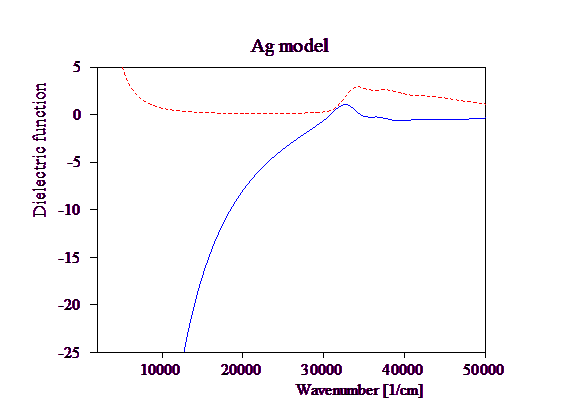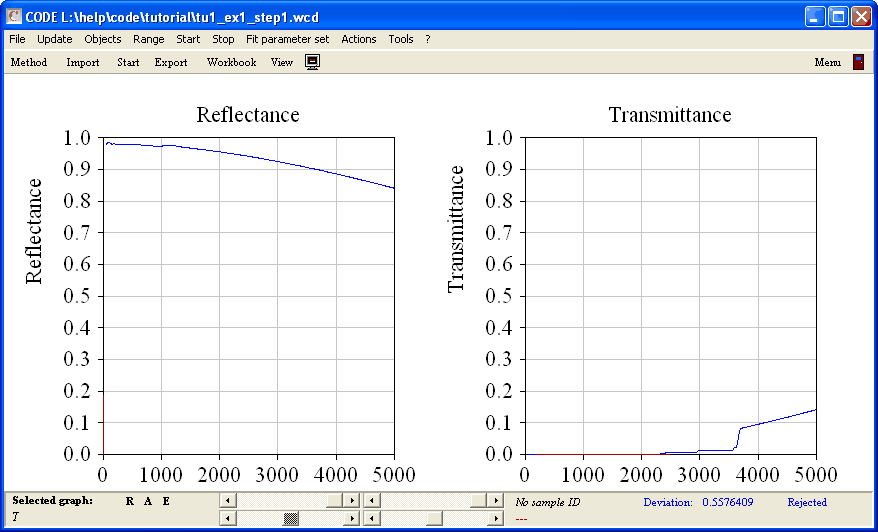To avoid the large emission losses of bare window panes one can try to increase the reflectance (and thus reduce the emission) by the deposition of a metal film. We can check this possibility the following way.
In the database of optical constants you will find the entry 'Ag model' that you can drag to the material list (see SCOUT tutorial 1 how to use the database). The Ag model is also distributed as an individual file with this tutorial. To use this, create a new material of type 'Dielectric function model', open its window and load the Ag model with the local menu command File|Open from the file ag.dfm. Set the Range of the Ag model to 50 ... 50000 1/cm with 500 data points. It should now look like this:

In the layer stack, add a layer of type 'Thin film' on top of the glass substrate and assign the Ag model to it. Set the thickness of the new layer to 10 nm.
Press Update in the main window and press F7 to see the reflectance and transmittance spectra in the main view:

The reflectance is now close to one and hence the emission (=1-R-T) is close to zero. In fact, the value of the emitted power at room temperature is now 0.0011 W/cm2 or 11 W/m2. This nice results is disturbed a little by the fact that the appearance of the coated glass in the visible is changed dramatically by the Ag layer. We will investigate this in the next step.
The program configuration obtained up to now is saved as tu1_ex1_step2.wcd in the data folder of this tutorial.